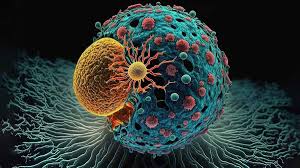Harmful elements in more than 400 Indian food products, says report

Harmful elements in more than 400 Indian food products, says report
Over 400 Indian food products have been detected by the European Union for possible cancer-causing substance contamination.
15 May 2024
What we eat shapes who we are. These pearls of wisdom frequently serve as our road map for eating healthily and living a balanced existence. However, the most recent news report about the adulteration of spices and foods with substances known to cause cancer has undoubtedly prompted questions about what is safe to eat. Although many of us may be initially taken aback by this, the European Union (EU) had warned of this already.
According to reports, the EU identified more than 400 Indian export-quality products as significantly polluted between 2019 and 2024. According to research by Deccan Herald that includes a PDF list of 400 Indian food products, 14 of these goods have hazardous ingredients, including mercury and cadmium in fish, which are known to harm different organs.
It claims that cadmium, a hazardous heavy metal that may be fatal if swallowed or inhaled, was present in up to 21 goods, including squid and octopus. It raises the risk of cardiovascular disease and chronic renal disease. Buildup within the body can result in cardiovascular, respiratory and kidney damage, and bone loss. Long-term cadmium exposure can harm one’s general health and wellbeing and is linked to an increased risk of cancer, especially lung cancer.
Additionally, according to the analysis, at least 59 goods use chemicals that are known to cause cancer. Tricyclazole, a fungicide prohibited in the EU due to its carcinogenic and genotoxic effects, is one of the compounds present in rice, herbs and spices. Aside from this, over 52 products—some of which have up to 5 pesticides or fungicides in them—contain multiple of these substances. A hazardous byproduct of ethylene oxide called 2-chloroethanol was found in about 20 goods, according to the PDF study that Deccan Herald published. It stated, “Ochratoxin A, a prohibited mycotoxin, was detected in ten products, including rice, coffee, and chillies.”
According to the investigation, among 100 other goods, organic shatavari, ashwagandha and sesame seeds were discovered to contain salmonella. The report also mentions that groundnut kernels and nut crackers contain aflatoxins, a lethal carcinogen and mutagen that can cause cancer and liver damage. The results show that rice flour has chlorpyrifos as well.
Imidacloprid and monocrotophos are found in the leaves and pods of moringa plants, according to the same study. For those who are unaware, monocrotophos is an organophosphate insecticide, a type of pesticide. It is commonly known that these pesticides are neurotoxins, interfering with the body’s neurons’ ability to operate.
Powdered coriander seeds are discovered to contain an organophosphate pesticide, acaricide and miticide; chlorpyrifos is mostly used to manage pest insects that are soil and foliage-borne. It has been connected to harmful health outcomes including respiratory problems, poor effects on reproductive health and neurodevelopmental difficulties in children. Prolonged exposure can result in long-term health issues, raising concerns and demands for government intervention.
Vibrio vulnificus, a bacterium that causes septicemia, severe wound infections and gastroenteritis, is present in frozen raw peeled shrimp tails. It is also claimed that a significant rate of morbidity and mortality results from a delayed diagnosis and course of treatment for this infection. Nitrofurans, a family of pharmaceuticals usually employed as antibiotics or antimicrobials, have been reported to be present in shrimp.
The furan ring containing a nitro group is the structurally distinctive element. Traces of sulphur dioxide, a gaseous air pollutant made of sulphur and oxygen, have been discovered in dry plums. For those unaware, burning fuel that contains sulphur, like coal, petroleum oil or diesel, produces SO2. Additionally, urea is frequently used to contaminate sugar. Urea, sometimes referred to as carbamide, is a solid, colourless, odourless chemical molecule that is extremely soluble in water and essentially non-toxic. It is a vital raw material for the chemical industry and is frequently used as a source of nitrogen in fertilisers.










